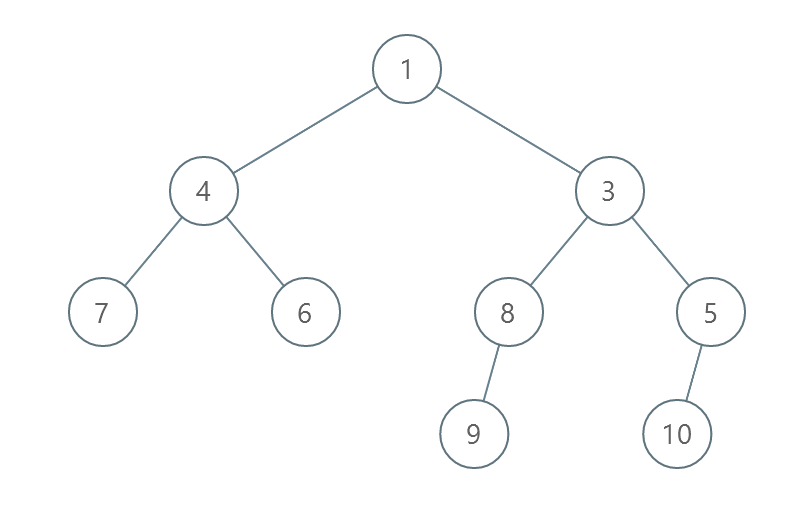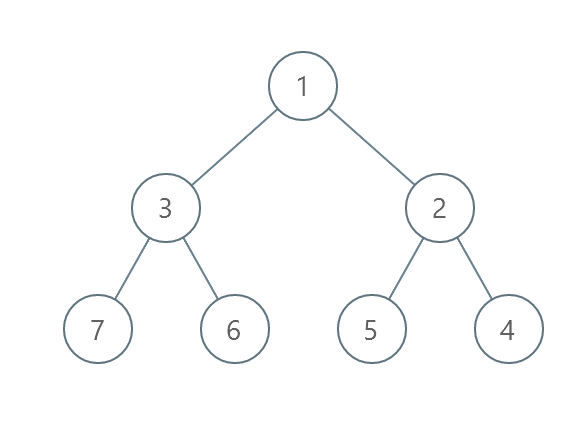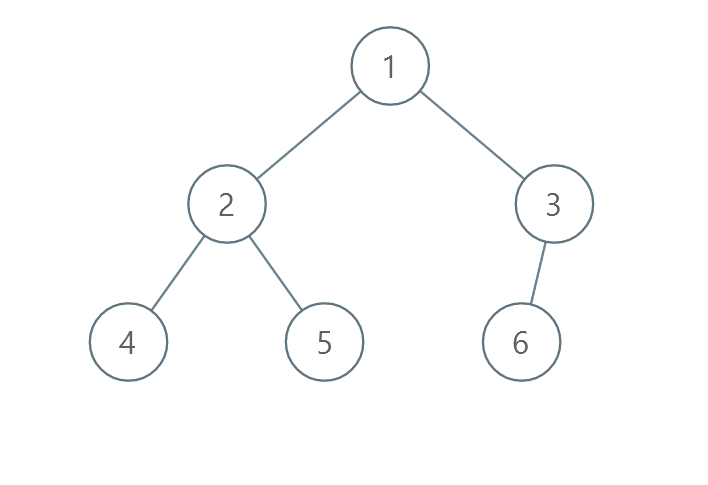Problem
You are given the root of a binary tree with unique values.
In one operation, you can choose any two nodes at the same level and swap their values.
Return the minimum number of operations needed to make the values at each level sorted in a strictly increasing order.
The level of a node is the number of edges along the path between it and the root node.
https://leetcode.com/problems/minimum-number-of-operations-to-sort-a-binary-tree-by-level/
Example 1:

Input:
root = [1,4,3,7,6,8,5,null,null,null,null,9,null,10]
Output:3
Explanation:
- Swap 4 and 3. The 2nd level becomes
[3,4].- Swap 7 and 5. The 3rd level becomes
[5,6,8,7].- Swap 8 and 7. The 3rd level becomes
[5,6,7,8].We used 3 operations so return 3.
It can be proven that 3 is the minimum number of operations needed.
Example 2:

Input:
root = [1,3,2,7,6,5,4]
Output:3
Explanation:
- Swap 3 and 2. The 2nd level becomes
[2,3].- Swap 7 and 4. The 3rd level becomes
[4,6,5,7].- Swap 6 and 5. The 3rd level becomes
[4,5,6,7].We used 3 operations so return 3.
It can be proven that 3 is the minimum number of operations needed.
Example 3:

Input:
root = [1,2,3,4,5,6]
Output:0
Explanation: Each level is already sorted in increasing order so return 0.
Constraints:
- The number of nodes in the tree is in the range
[1, 10⁵]. 1 <= Node.val <= 10⁵- All the values of the tree are unique.
Test Cases
1 | # Definition for a binary tree node. |
1 | import pytest |
Thoughts
按层序(level-order)遍历二叉树,可以类似 2415. Reverse Odd Levels of Binary Tree 那样直接一层一层地取出一层的所有节点。
对于某一层,计算调至有序所需的最少交换次数。
对于 m 个(各不相同的)的数字,先计算出排序的结果,然后拿原始数组跟排序结果比较。任选一个数字,如果它的位置在排序前后不变,就不需要交换(或者说交换 1 - 1 = 0 次)。否则一定可以找到一组数,这一组数轮换一圈就可以全部归位。如果这一组数有 k 个,则需要交换 k - 1 次。
最终可以把 m 个数字分成若干组,每组数字是一个轮换循环。可见如果有 r 组,则总共需要交换 m - r 次。
由于每个数字都各不相同,数字本身的值就不重要了,可以把每个数字的下标取出来,按照数字的大小对下标排序。
比如 m = 8 个数字为 [5, 1, 3, 2, 4, 7, 6, 8],按数字大小排序的下标为 [1, 3, 2, 4, 0, 6, 5, 7]:
对按数字排序的下标数组找出轮换循环,易知共有四个轮换循环组:
所以原始的数组需要进行 8 - 4 = 4 次两两交换。
整体最坏时间复杂度是 O(n log n),空间复杂度 O(n)。
Code
1 | from typing import Optional |